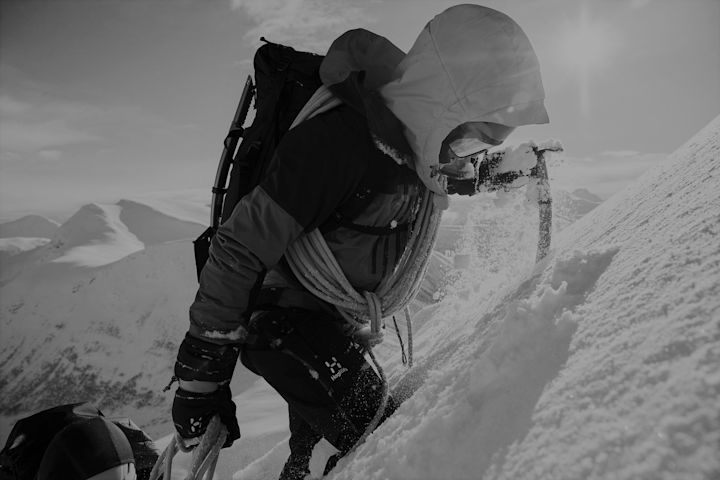
Why choosing quality
gear makes a difference
September 2023
As tempting as it may be to click home a bundle of fast fashion pieces for the total price of that really nice down jacket you originally wanted, slowing down and investing in quality will likely be more beneficial in the long run. In fact, when it comes to outdoor clothing, the benefits of choosing quality over quantity often go well beyond the difference you can physically see and feel. From big-picture savings to more ethical manufacturing practices, there are several reasons why buying higher quality gear is better for everyone. Let’s take a closer look at some of the conclusions we have reached.
Higher quality gear stays in use longer
The best way to reduce a product’s total footprint is to keep it in use for as long as possible. Outdoor gear produced by fast fashion brands is often made as cheaply as possible. Among other consequences, this typically yields products that wear out quickly and, much sooner than later, end up in the landfill. This harmful take-make-waste cycle contributes to environmental pollution and the waste of textiles and other precious resources.
High-quality outdoor clothing, on the other hand, is built to last. These garments are usually more consciously designed and crafted, with careful construction and material choices geared towards achieving the right balance of durability and comfort for the intended activity. When garments last longer and more closely match performance needs, consumers don't need to replace them as frequently. And when fewer items are discarded, the amount of textile waste generated is reduced.
More mindful resource and chemical consumption
Manufacturing processes demand a lot of energy, water, and other finite resources, and can introduce harmful substances to the environment. Many high-quality outdoor clothing brands make more thoughtful design and material choices which can, in some cases, translate to more thoughtful usage of resources. They may also opt for fabrics that require less hazardous chemical treatments during production. This reduces the environmental impact associated with the use and disposal of harmful chemicals used in some low-quality garment production processes.
It is common for these brands to work within the guiding framework of certification systems such as bluesign®, to ensure that their fabrics meet strict safety and environmental requirements regarding the use of harmful substances. Choosing products from such outdoor brands helps support better practices in the industry and encourages others to follow suit.
More ethical manufacturing practices
The production of high-quality outdoor gear depends on highly skilled labor. High-quality outdoor clothing brands often prioritize more ethical manufacturing practices which champion the rights and wellbeing of the workers making their products. They may, for example, adhere to higher codes of conduct and standards for fair labor practices, such as the labor standards set out by Fair Wear, a foundation working with brands to support fairer ways to make clothes.
By supporting such brands, consumers support more decent working conditions and contribute to a more responsible industry.
Circular thinking for a less wasteful future
There are many reasons why higher quality gear tends to be less detrimental for the environment. But still, we should not ignore the fact that producing gear ultimately has a bigger impact on the environment than not producing any new gear at all. That is why many high-quality outdoor clothing brands are now starting to explore the principles of the circular economy.
These principles involve taking actions to keep already existing materials and products in use for as long as possible. Brands taking a step towards circularity may offer repair services, encourage clothing recycling, or take back used garments to be repurposed or recycled. Haglöfs Restored is an example of this kind of initiative.
Supporting such initiatives helps reduce waste and keep quality products and still-premium materials in the loop. They also promote and inspire a more mindful approach to fashion—which is the only way forward from here.